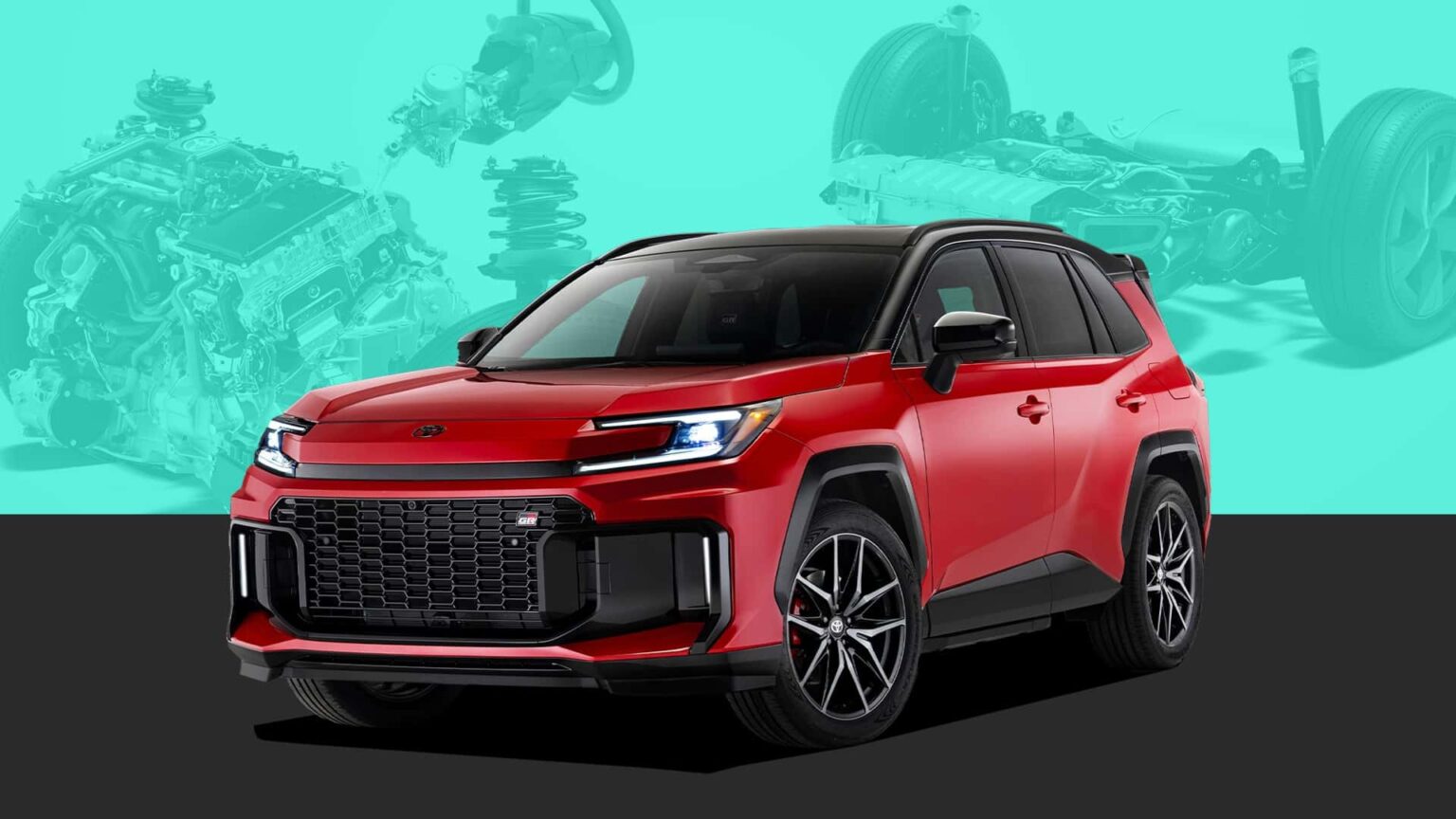Toyota’s Hybrid System (THS) doesn’t get enough credit. On the market for nearly two decades, THS is one of the most elegant pieces of engineering the car world has ever seen. But it’s a system that isn’t terribly well understood. Knowing how it works, at least vaguely, is key to fully appreciating THS, and appreciating the brilliance of Toyota making the hybrid system standard across the range of new RAV4s.
Here’s how it works: THS eschews a traditional transmission to get power to the wheels. Instead, it has two electric motor-generators meshed to a planetary gearset, which sits where a traditional transmission would normally go. As a quick refresher, a planetary gearset consists of a sun gear at the center, planet gears that “orbit” the sun, and a ring gear around the planets. Some planetary gearsets, like Toyota’s, use a separate planet carrier to connect all the planet gears.
Photo by: Toyota
Motor-Generator 1 (MG1) is the smaller of two, and it’s connected directly to the engine and the sun gear of the planetary gearset. It works as a starter for the engine, and in tandem with the engine, as a generator to charge the battery. Motor-Generator 2 (MG2) is larger, and it’s connected to the ring gear of the planetary gearset, which itself is connected to the differential. Most of the time, MG2 drives the wheels on its own, but since the engine/MG1 are connected to the same planetary gearset, it too can drive the wheels. So, the engine can operate in series or in parallel with MG2, which gives this system its “series-parallel” classification.
It’s complicated, and it isn’t.
The operating principle is hard to understand—I myself had to do a lot of reading and video-watching before I understood it—but the hardware is very simple. An engine designed to run at efficient RPMs, some electric motors, and a couple of gears. That’s it. A conventional automatic transmission might have four or five planetary gearsets on its own. And for all-wheel drive, Toyota just adds a small electric motor working on its own at the rear.
This simplicity is a huge part of why THS cars have proven so reliable. Yes, it’s Toyota, which takes reliability very seriously, but a relative lack of components means fewer things to break, too.
The battery is simple, too. Traditionally, THS cars used old-school Nickel-Metal Hydride batteries, but now, Toyota’s moved to more modern lithium-ion. These are much smaller batteries than you’d find in a plug-in hybrid or a full EV. Toyota hasn’t told us the RAV4’s battery size yet, but the new Camry uses a 1.0-kWh battery. Which is tiny, meaning less weight and fewer gnarly minerals used to make it.

Photo by: Toyota

Photo by: Toyota
The upshot of all this is a system that’s reliable, cheap, efficient, and clean. Toyota hasn’t given us full specs for the 2026 RAV4 yet, but we can compare hybrid and gas-only 2025 RAV4s to see the upshot of the hybrid system. Going hybrid ups fuel economy from 29 to 39 MPG overall, and reduces C02 emissions from 320 to 224 grams per mile. Big gains. Now multiply that across the additional hundreds of thousands of hybrid RAV4s Toyota will sell annually and you start to get an idea of how big a deal this is.
What I love as much as the clever engineering of THS is the fact that it asks nothing of the owner. You fill it up with gas like a regular car—just less often—and you drive it like it’s a regular car. No need to change your driving style, or your lifestyle.
It’s worth noting that Toyota is not the only automaker to offer a hybrid system like this. Honda’s two-motor hybrid system is similar and similarly effective, and Ford has also done Toyota-type hybrids for decades. But, Toyota was the pioneer, and it’s bold enough to go hybrid-only for two of the most popular cars on the planet, the Camry, and now, the RAV4.

An older version of the THS.
Photo by: Toyota
But in a way, it’s not bold. This is an extremely effective and extremely well-proven system, and ultimately, it’s a better product. If someone came to me debating a regular RAV4 vs a hybrid model, I’d say without hesitation to go hybrid. It’s a no-brainer, and now, Toyota’s made the choice for you. It’s the right one.
Read the full article here



